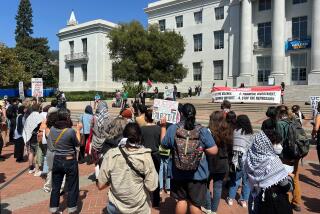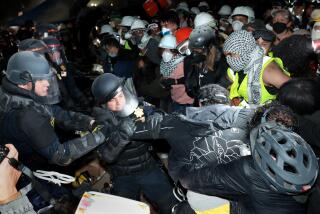UC and Native Americans: Unsettled remains
In 1974, Berkeleyâs distinguished anthropologist Robert Heizer issued a public mea culpa for the practices of his profession in treating âCalifornia Indians as though they were objects.â In particular, he apologized for the âcontinued digging up of the graves of their ancestors.â
In 1999, the department of anthropology at Berkeley issued an apology to the cultural descendants of Ishi, a Yahi native, for sending his brain to the Smithsonian after his death in 1916. âWe regret our departmentâs role in what happened to Ishi, a man who had already lost all that was dear to him.â
This was a good beginning to a journey of accountability and reconciliation. But since then, the University of California has been largely silent about its role as the legal owner of a vast collection of native remains stashed in basements in campuses throughout the state. It owes at the very least 10,000 more apologies.
VIDEO: Oregon bans Native American mascots in schools
What happened to Ishi was by no means an anomaly. Between the late 18th century, when Thomas Jefferson dug up a thousand skeletons buried near his home, and the 1960s, when the Red Power movement challenged the right of archaeologists and scientists to treat Indian dead as specimens, hundreds of thousands of native bodies were excavated throughout the United States.
During the first half of the 20th century, Californiaâs anthropologists played a leading role in both the exhumation of graves and the trade in funerary artifacts. Ralph Glidden, a self-styled archaeologist, filled and decorated the Santa Catalina Island museum with hundreds of crania and bones taken from Tongva graves. UCLA bought what remained of his collection in 1962. Fifty years later, the university still housed 200 body parts exhumed by Glidden.
At Berkeley, archaeologist Edward Gifford tested his eugenic theories of racial difference on the skulls of native peoples sent to the university by collectors all over the state. By 1948, Berkeley was boasting to Life magazine that its Native American collection included âmore than 10,000 Indian skeletons, many of them complete.â A full-page photograph depicted a room full of human remains and a graduate student using a âcraniometer to measure an ancient Indian skull.â A colleague recalls seeing human bones displayed in the landmark Campanile in the early 1960s.
In 1990 Congress passed the Native American Graves Protection and Repatriation Action, which required federally funded museums and universities to repatriate human remains to recognized tribes. Although most institutions comply with the letter of the law, the pace of repatriation is glacially slow. By 2011 the Smithsonian had repatriated only one-third of its collection of human remains.
The University of California is the main repository of native remains in this region. Here too repatriation is stalled. UC Davis retains more than 90% of its collection (which caused one Native American activist to note that there are more dead Indians on the Davis campus than live ones). As of June 2013, Berkeley has repatriated only 315 of its 10,000 remains. Why so little progress?
First, the process is slow and expensive, as claimants must make their ponderous way through faculty, campuses and university committees. Second, tribes unrecognized by the federal government have no legal right to make a direct claim. Third, and most significantly, because of unscientific work methods, most of the collection is unidentifiable as to provenance or tribal affiliation.
The burden for this impasse should be shouldered by the university. Throughout the 20th century, anthropologists from Berkeley and other UC campuses abused their scientific privilege by digging up graves without respect for the descendants of the dead; encouraging amateur archaeologists all over the state to send skeletal remains to the nearest university; failing in many cases to document the sites of excavation; indiscriminately mixing up body parts; and promoting racist ideas about native inferiority.
The Phoebe A. Hearst Museum of Anthropology, which serves as curator of Berkeleyâs collection of human remains, is currently closed for a âprofound transformationâ of its galleries, educational programs and storage facilities. According to a Hearst staff member, the collection of body parts will be moved from a dank basement in the Hearst Gym to ânew and improved storageâ in Kroeber Hall. There will be a visitors room for native groups to hold ceremonies, and a Native American advisory committee â selected by the university â will be established.
These are small steps in the right direction. But in addition to these mostly cosmetic changes, and to complying with the bureaucratic procedures spelled out in the repatriation law, the university should take responsibility for, in Heizerâs words, âa human ethicalâ issue, namely, how so many well-educated, well-meaning professors and administrators eagerly violated the rights of the dead and tormented the living.
If the university wants to transform its relations with tribal and native groups, it needs to take bold action, including issuing public apologies for decades of malpractice, accelerating the repatriation process and offering land or compensation for reburials.
Tony Platt is a visiting professor of justice studies at San Jose State University and the author of âGrave Matters: Excavating Californiaâs Buried Past.â
More to Read
A cure for the common opinion
Get thought-provoking perspectives with our weekly newsletter.
You may occasionally receive promotional content from the Los Angeles Times.










